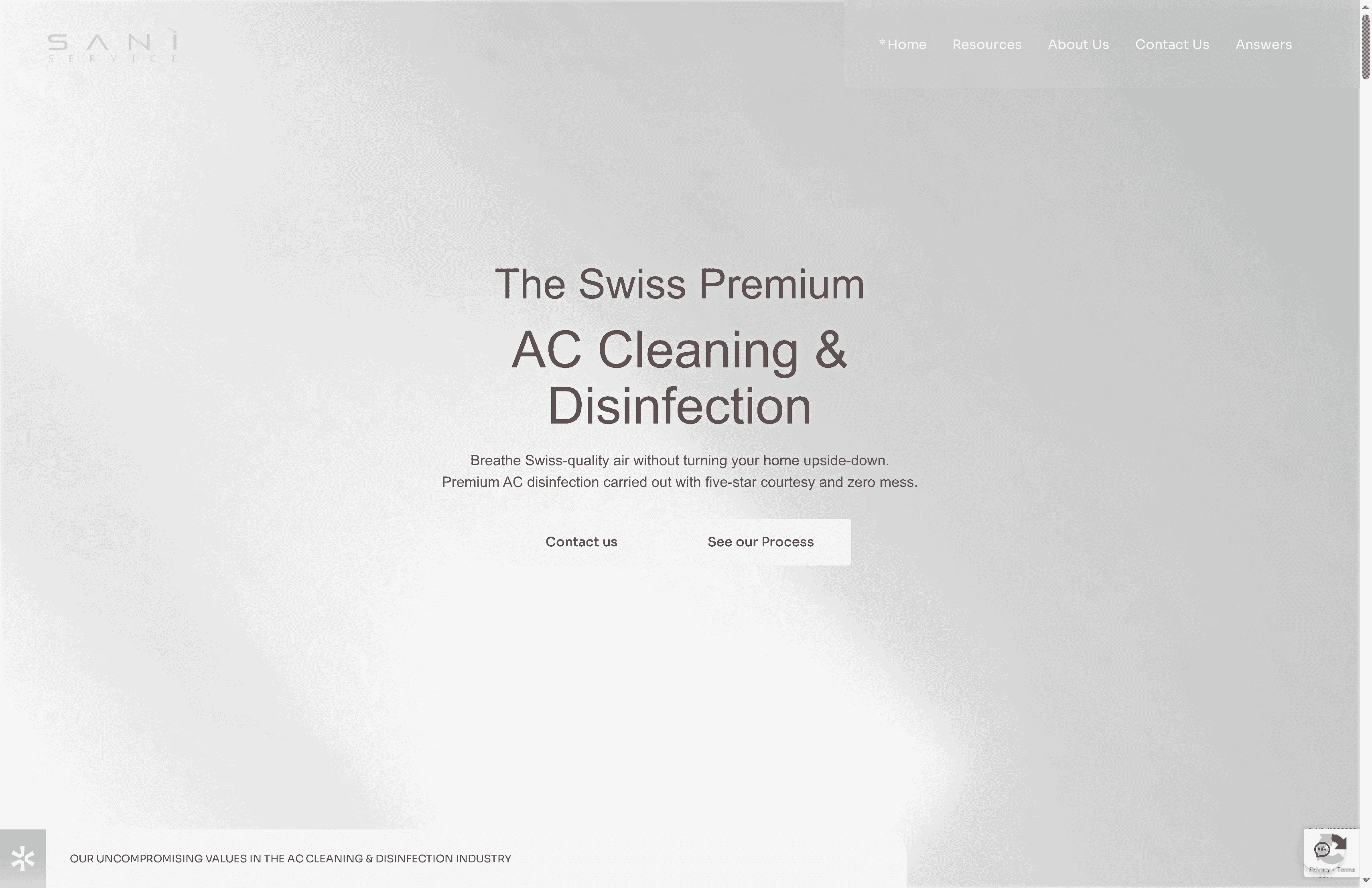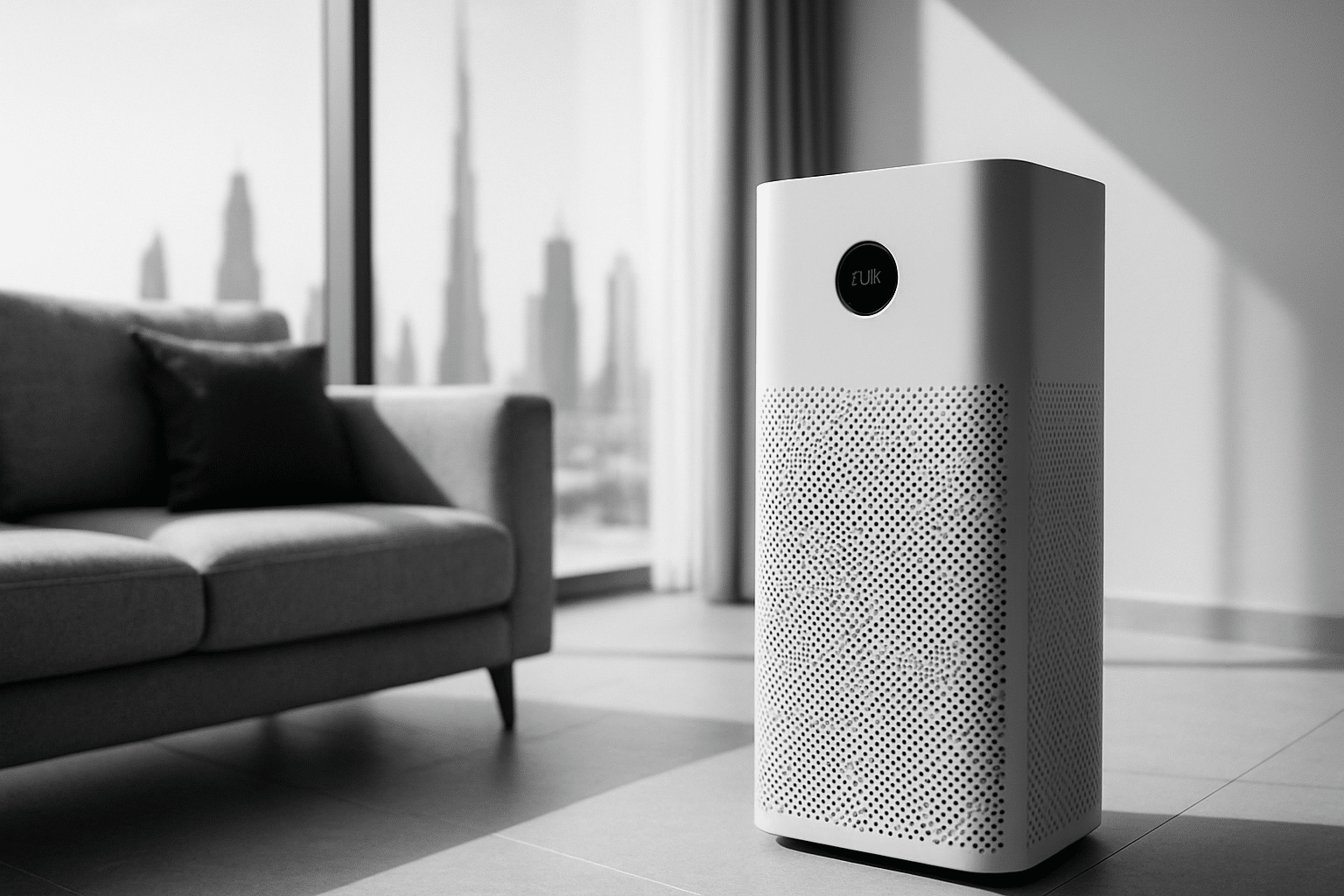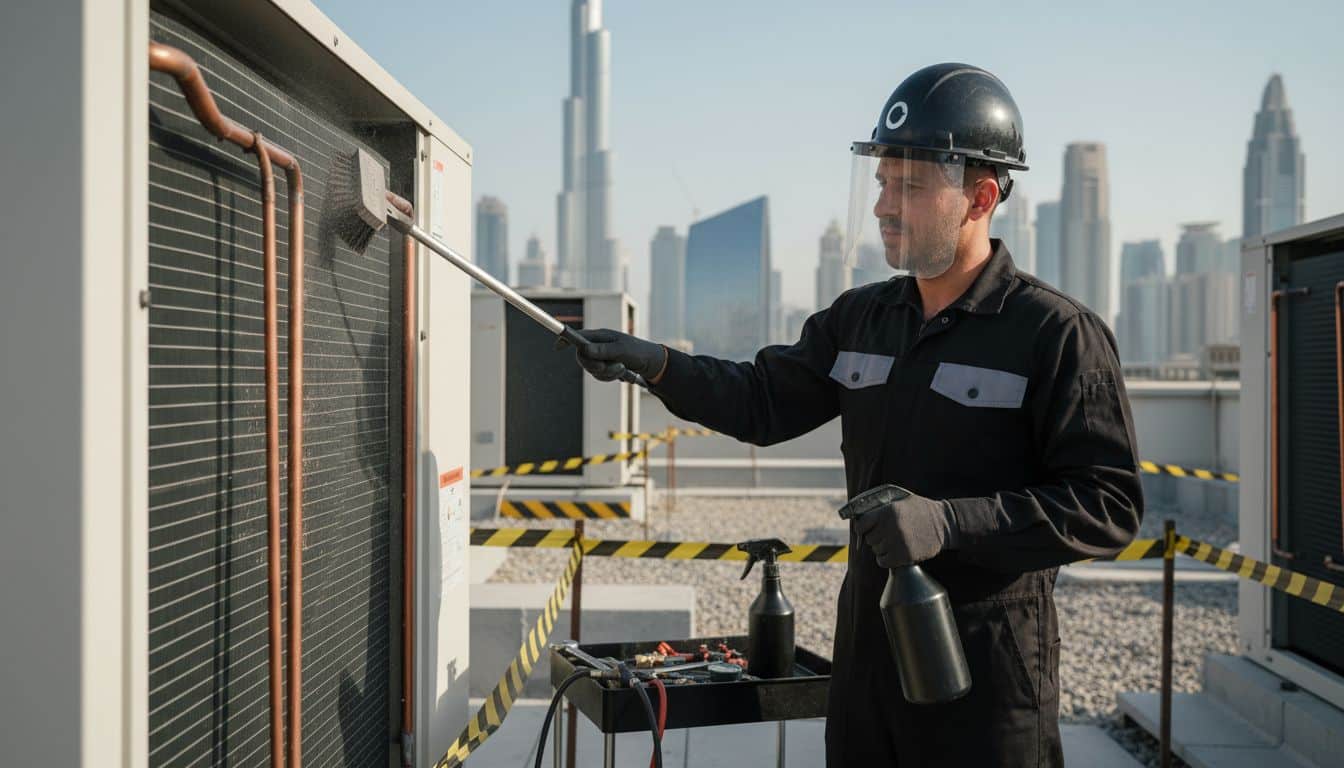
7 Essential Steps for an Effective HVAC Maintenance Checklist
In Dubai, where humidity and dust levels run high, your HVAC system faces more strain than most people realize. Poor maintenance accounts for up to 30 percent loss in cooling efficiency and can drive up your energy bills fast. Staying ahead of these challenges is not just about comfort, but also about keeping your indoor air clean and your system running smoothly. This guide offers clear steps to protect your investment and create a healthier living or working environment.
Table of Contents
Contents
- 1 Table of Contents
- 2 Quick Summary
- 3 1. Inspect Air Filters and Replace Regularly
- 4 2. Clean and Disinfect HVAC Coils Thoroughly
- 5 3. Check and Clear Drain Lines for Blockages
- 6 4. Examine Ductwork for Leaks and Contamination
- 7 5. Test System Thermostat for Accurate Readings
- 8 6. Lubricate Moving Parts to Prevent Wear
- 9 7. Review Electrical Connections and Controls
- 10 Take Control of Your HVAC Health with Proven Expertise
- 11 Frequently Asked Questions
- 11.0.1 How often should I inspect and replace my HVAC air filters?
- 11.0.2 What steps are involved in cleaning and disinfecting HVAC coils?
- 11.0.3 How can I check and clear HVAC drain lines for blockages?
- 11.0.4 What should I look for when examining ductwork for leaks?
- 11.0.5 How can I test my HVAC system thermostat for accurate readings?
- 11.0.6 What are the key points for lubricating moving parts in an HVAC system?
- 12 Recommended
- Inspect Air Filters And Replace Regularly
- Clean And Disinfect HVAC Coils Thoroughly
- Check And Clear Drain Lines For Blockages
- Examine Ductwork For Leaks And Contamination
- Test System Thermostat For Accurate Readings
- Lubricate Moving Parts To Prevent Wear
- Review Electrical Connections And Controls
Quick Summary
| Takeaway | Explanation |
|---|---|
| 1. Regularly Check Air Filters | Inspect filters monthly and replace them every 60-90 days for optimal air quality. |
| 2. Clean HVAC Coils Frequently | Clean coils with specialized solutions to prevent performance drops and maintain energy efficiency. |
| 3. Maintain Drain Lines to Prevent Blockages | Inspect drain lines monthly and clear obstructions to avoid water damage and costly repairs. |
| 4. Inspect Ductwork for Leaks | Regularly check ductwork for leaks and contamination to ensure efficient air distribution and quality. |
| 5. Test Thermostat Accuracy | Verify thermostat readings regularly to prevent energy waste and ensure accurate temperature control. |
1. Inspect Air Filters and Replace Regularly
Air filters are the unsung heroes of your HVAC system. They protect your indoor environment by trapping dust, allergens, and microscopic particles that could compromise your air quality and system performance. According to guidance from the Environmental Protection Agency, regular inspection and replacement of HVAC filters is crucial for maintaining optimal indoor air quality.
Your air filter acts like a gatekeeper for your entire HVAC system. As air circulates, filters capture pollutants including dust, pollen, pet dander, and microscopic debris. Over time, these filters become clogged and lose their effectiveness. A dirty filter forces your system to work harder, reducing efficiency and potentially increasing energy costs by 5 to 15 percent.
Key Filter Inspection and Replacement Practices:
- Check filters monthly in high dust environments like Dubai
- Replace standard filters every 90 days
- For homes with pets or allergy sufferers, replace filters every 60 days
- Consider high efficiency filters for improved air quality
In the unique climate of the United Arab Emirates, where dust and sand can quickly accumulate, monitoring your HVAC filters becomes even more critical. Dusty environments mean filters can become saturated faster than in other regions. Regular replacement ensures your system continues to provide clean, healthy air for your home or office.
A simple guide on AC filter replacement can help you understand the nuanced process of maintaining your HVAC system’s respiratory health. By investing just a few minutes each month in filter inspection, you protect your system’s longevity and your indoor air quality.
2. Clean and Disinfect HVAC Coils Thoroughly
HVAC coils are the critical heat exchangers in your air conditioning system that play a pivotal role in cooling and dehumidifying indoor air. These intricate components accumulate dust, debris, and microbial growth over time, which can significantly impact your system’s performance and indoor air quality. EPA preventive maintenance guidance emphasizes the importance of regular cleaning and disinfection to maintain optimal system efficiency.
In Dubai’s unique climate characterized by high humidity and dust, HVAC coils are particularly vulnerable to rapid contamination. Dust and moisture create an ideal breeding ground for microorganisms, potentially leading to reduced cooling efficiency, increased energy consumption, and compromised air quality. Dirty coils can decrease your system’s performance by up to 30 percent, translating to higher electricity bills and potential health risks.
Critical Aspects of HVAC Coil Cleaning:
- Remove surface dust and debris carefully
- Use specialized cleaning solutions designed for HVAC systems
- Ensure thorough drying after cleaning to prevent microbial growth
- Consider professional cleaning for comprehensive maintenance
The process involves meticulously cleaning both evaporator and condenser coils. Evaporator coils inside your indoor unit are particularly prone to moisture accumulation, while outdoor condenser coils face constant exposure to environmental contaminants. Professional insights on AC coil cleaning in Dubai can provide deeper understanding of region specific challenges.
By investing in regular coil maintenance, you protect your HVAC system’s longevity, maintain energy efficiency, and ensure healthier indoor air quality for your home or office. Remember that professional cleaning goes beyond surface level maintenance, addressing hidden microbial growth and potential system strain.
3. Check and Clear Drain Lines for Blockages
HVAC drain lines are the unsung heroes of your cooling system, silently managing condensation and preventing water damage. In Dubai’s high humidity environment, these narrow passages can quickly become breeding grounds for algae, mold, and debris. EPA recommendations emphasize the critical importance of regular drain line inspection and maintenance to protect your system’s performance and prevent potential water damage.
Your HVAC system generates significant moisture during operation. As warm air passes over cold evaporator coils, condensation forms and must be efficiently channeled away through drain lines. When these lines become blocked, water can back up, potentially causing serious issues like system shutdown, water leakage, and indoor property damage. In extreme cases, blocked drain lines can lead to costly repairs and potential mold growth.
Drain Line Maintenance Strategies:
- Inspect drain lines monthly
- Use a wet vacuum to clear minor blockages
- Apply algae prevention treatments
- Check for water leaks around the drain line area
- Consider professional annual cleaning
The unique climate of the United Arab Emirates presents specific challenges for HVAC systems. Dust, high humidity, and mineral deposits can accelerate drain line blockages. By implementing a proactive maintenance approach, you protect not just your air conditioning system, but also your property’s structural integrity.
Understanding the nuances of air conditioner disinfection processes can provide additional insights into comprehensive system care. Regular drain line maintenance is more than a technical task it is an investment in your property’s long term health and performance.
4. Examine Ductwork for Leaks and Contamination
Your HVAC system’s ductwork is the critical network that distributes cooled air throughout your property, functioning like the respiratory system of your building. EPA guidance emphasizes the importance of regular ductwork inspection to maintain optimal indoor air quality and system efficiency.
In Dubai’s challenging environment characterized by extreme temperatures and high dust levels, ductwork can quickly accumulate contaminants. Leaks and gaps in the duct system not only reduce cooling efficiency but also introduce unfiltered air, dust, and potential pollutants into your living or working spaces. These compromised ducts can lead to energy losses of up to 20 percent and significantly impact indoor air quality.
Critical Ductwork Examination Strategies:
- Visually inspect accessible duct sections
- Check for visible signs of dust buildup
- Listen for unusual whistling sounds indicating air leaks
- Look for moisture or signs of potential mold growth
- Measure temperature differences across different duct sections
The unique climate of the United Arab Emirates demands specialized attention to HVAC systems. Dust storms, high humidity, and temperature fluctuations can accelerate duct degradation. Professional AC duct cleaning services that include comprehensive duct sealing can provide a thorough assessment and remediation of potential issues.
By proactively examining your ductwork, you protect not just your HVAC system’s performance, but also the health and comfort of everyone who occupies the space. Regular inspection can prevent costly repairs and ensure your system operates at peak efficiency.
5. Test System Thermostat for Accurate Readings
Your thermostat serves as the command center for your entire HVAC system, acting as the critical interface between your cooling needs and system performance. EPA guidance highlights the importance of regular thermostat testing to ensure precise temperature control and maximize energy efficiency.
In Dubai’s extreme climate, where temperatures can soar well above 40 degrees Celsius, even a slight thermostat inaccuracy can result in significant energy waste and discomfort. A miscalibrated thermostat might cause your system to run longer than necessary, increasing electricity consumption by up to 15 percent and placing unnecessary strain on your HVAC equipment.
Thermostat Accuracy Testing Techniques:
- Compare thermostat reading with a separate digital thermometer
- Check temperature consistency across different rooms
- Verify rapid and accurate system response to temperature changes
- Inspect battery levels and electrical connections
- Consider professional calibration for smart or advanced thermostats
Modern thermostats in the United Arab Emirates often integrate advanced technologies like smart sensors and WiFi connectivity. These sophisticated devices require periodic verification to maintain their precision. A simple test can reveal potential issues before they escalate into more significant system problems.
For residents and property managers in Dubai seeking comprehensive system evaluation, professional AC maintenance services can provide detailed thermostat diagnostics and ensure optimal system performance.
6. Lubricate Moving Parts to Prevent Wear
Moving parts within your HVAC system are the mechanical heartbeat of your cooling infrastructure, experiencing constant friction and stress. EPA recommendations emphasize that proper lubrication is critical for reducing mechanical wear and maintaining system efficiency.
In Dubai’s extreme temperatures and challenging environmental conditions, HVAC components endure significant mechanical stress. Bearings, motors, and fan assemblies generate substantial heat and friction, which can accelerate equipment degradation. Without proper lubrication, these components can experience up to 40 percent faster wear, potentially leading to premature system failure and expensive repairs.
Strategic Lubrication Practices:
- Use manufacturer recommended lubricants
- Focus on bearings and motor shaft interfaces
- Apply lubricant sparingly to prevent over saturation
- Clean components before lubrication
- Inspect moving parts during lubrication process
The unique climate of the United Arab Emirates demands meticulous maintenance strategies. Dust, high temperatures, and persistent humidity create an environment where mechanical components are under constant stress. Professional AC maintenance services can provide comprehensive lubrication that extends your system’s operational lifespan.
By implementing consistent lubrication practices, you transform routine maintenance into a proactive strategy for preserving your HVAC system’s performance and preventing unexpected breakdowns. Think of lubrication as an investment in your system’s longevity and reliability.
7. Review Electrical Connections and Controls
Electrical connections are the critical nervous system of your HVAC equipment, transmitting power and control signals that determine system performance and safety. EPA guidance emphasizes the importance of regular electrical system review to prevent potential malfunctions and ensure optimal operation.
In Dubai’s extreme environmental conditions, electrical connections face unique challenges. High temperatures, humidity, and occasional dust storms can accelerate electrical component degradation. Loose or corroded connections can increase electrical resistance, potentially causing system inefficiency, unexpected shutdowns, or even fire risks. Experts estimate that 85 percent of HVAC system failures can be traced back to electrical connection problems.
Critical Electrical Connection Inspection Strategies:
- Check for visible signs of corrosion or wear
- Ensure all connection points are tight and secure
- Look for discoloration or burning marks on electrical components
- Test voltage and amperage across key electrical interfaces
- Verify control board functionality and responsiveness
The United Arab Emirates climate demands rigorous electrical system maintenance. Professional AC maintenance services can provide comprehensive electrical system diagnostics that go beyond surface level inspections.
By implementing systematic electrical connection reviews, you transform potential vulnerability into a proactive maintenance strategy. Think of this process as a health checkup for your HVAC system electrical infrastructure ensuring reliability, safety, and peak performance.
This table summarizes the key HVAC maintenance practices discussed in the article, including inspection, replacement, and cleaning strategies to optimize system efficiency and indoor air quality.
| Maintenance Task | Key Points & Actions | Benefits/Outcomes |
|---|---|---|
| Inspect Air Filters | Check monthly, replace every 90 days, consider high-efficiency filters | Improved air quality, reduced energy costs |
| Clean HVAC Coils | Remove dust, use specialized cleaners, ensure thorough drying | Enhanced cooling efficiency, reduced energy consumption |
| Clear Drain Lines | Inspect monthly, use wet vacuum, apply algae prevention treatments | Prevents water damage, maintains system efficiency |
| Examine Ductwork | Inspect for leaks, check for dust and mold growth | Maintains air quality, reduces energy loss |
| Test Thermostat | Compare readings, check system response, verify connections | Ensures accurate temperature control, reduces energy waste |
| Lubricate Moving Parts | Use recommended lubricants, focus on bearings, inspect during lubrication | Reduces mechanical wear, extends component lifespan |
| Review Electrical Connections | Check for corrosion, ensure tight connections, test voltage | Prevents malfunctions, ensures system safety |
Take Control of Your HVAC Health with Proven Expertise
Maintaining your HVAC system with the right checklist is vital to ensure cleaner air and lasting performance. If you find yourself overwhelmed by tasks like inspecting filters, cleaning coils, or checking electrical connections, you are not alone. Dust, humidity, and complex system components in the UAE create unique challenges that require more than basic upkeep. Saniservice understands these pain points and offers science-backed solutions tailored to protect your indoor air quality and prevent costly breakdowns.
Discover how our NADCA-certified technicians perform meticulous cleaning and disinfection using hospital-grade biosanitisers. Our proven methods address each critical step discussed in the 7 Essential Steps for an Effective HVAC Maintenance Checklist, including coil cleaning, drain line clearing, ductwork inspection, and more.
Experience the peace of mind that comes from professional care supported by our multidisciplinary Indoor Sciences team. Learn how we transform complex maintenance into long-lasting system health by exploring our AC Cleaning & Maintenance – Saniservice AC Cleaning services and real-world successes in our Case Studies – Saniservice AC Cleaning.
Don’t wait for your HVAC issues to escalate or your energy bills to soar. Act now to safeguard your indoor environment with Dubai’s most trusted experts. Visit Saniservice to schedule your comprehensive HVAC maintenance and breathe cleaner, healthier air today.
Frequently Asked Questions
How often should I inspect and replace my HVAC air filters?
To maintain optimal indoor air quality, inspect your HVAC air filters monthly and replace standard filters every 90 days. If you have pets or allergies, replace them every 60 days to ensure efficient system performance.
What steps are involved in cleaning and disinfecting HVAC coils?
Begin by removing surface dust and debris from the coils, then use specialized cleaning solutions to ensure thorough disinfection. After cleaning, allow the coils to dry completely to prevent microbial growth and enhance cooling efficiency.
How can I check and clear HVAC drain lines for blockages?
Inspect your HVAC drain lines monthly for any signs of clogs. Use a wet vacuum to clear minor blockages and apply algae prevention treatments to maintain clear flow.
What should I look for when examining ductwork for leaks?
Visually inspect your ductwork for dust buildup and listen for whistling sounds that indicate air leaks. Check for moisture or mold signs, as these can compromise system efficiency and indoor air quality.
How can I test my HVAC system thermostat for accurate readings?
Compare your thermostat reading to a separate digital thermometer to ensure accuracy. Additionally, check that the thermostat responds quickly to temperature changes and consider professional calibration if discrepancies persist.
What are the key points for lubricating moving parts in an HVAC system?
Use manufacturer-recommended lubricants to focus on bearings and motor interfaces, applying them sparingly to prevent oversaturation. A monthly lubrication routine can significantly reduce wear and extend the lifespan of your HVAC components.
Recommended
- Best Air Duct Cleaning Companies Near Me – Expert Comparison 2025 – Saniservice AC Cleaning
- Best Practices for AC Hygiene: Keep Your Home Healthy – Saniservice AC Cleaning
- 7 Essential Steps for AC Disinfection Every Property Needs – Saniservice AC Cleaning
- HVAC Cleaning Process 2025: Step-By-Step Guide for Healthier Air – Saniservice AC Cleaning
- Preventive Maintenance Checklist for Diesel Injection Pros – My WordPress
- Coffee Machine Preventative Maintenance Guide for Optimal Performance – Coffee Sensor







Leave a Reply